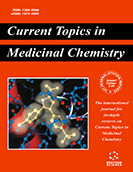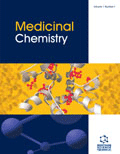Abstract
Hereditary leiomyomatosis and renal cell cancer (HLRCC) (MIM 605839) is a recently identified autosomal dominant tumor susceptibility syndrome characterized by predisposition to benign leiomyomas of the skin and the uterus (fibroids, myomas). Susceptibility to early-onset renal cell carcinoma and uterine leiomyosarcoma is present in a subset of families. Renal cell carcinomas are typically solitary and aggressive tumors displaying papillary type 2 or collecting duct histology. The disease predisposing gene was identified as fumarate hydratase (fumarase, FH) (MIM 136850). FH encodes an enzyme that operates in the mitochondrial Krebs cycle being thus involved in cellular energy metabolism. The recent discovery of HLRCC and the predisposing gene FH has increased the present knowledge of hereditary renal cancer and enabled identification of the predisposed individuals. This review provides the present knowledge of the clinical, histopathological, and molecular features of HLRCC. Future prospects related to studies on the phenotype and molecular biology of HLRCC will also be discussed.
Keywords: hlrcc, fh, fumarase, leiomyoma, leiomyosarcoma, renal cancer
Current Molecular Medicine
Title: Hereditary Leiomyomatosis and Renal Cell Cancer (HLRCC)
Volume: 4 Issue: 8
Author(s): Maija Kiuru and Virpi Launonen
Affiliation:
Keywords: hlrcc, fh, fumarase, leiomyoma, leiomyosarcoma, renal cancer
Abstract: Hereditary leiomyomatosis and renal cell cancer (HLRCC) (MIM 605839) is a recently identified autosomal dominant tumor susceptibility syndrome characterized by predisposition to benign leiomyomas of the skin and the uterus (fibroids, myomas). Susceptibility to early-onset renal cell carcinoma and uterine leiomyosarcoma is present in a subset of families. Renal cell carcinomas are typically solitary and aggressive tumors displaying papillary type 2 or collecting duct histology. The disease predisposing gene was identified as fumarate hydratase (fumarase, FH) (MIM 136850). FH encodes an enzyme that operates in the mitochondrial Krebs cycle being thus involved in cellular energy metabolism. The recent discovery of HLRCC and the predisposing gene FH has increased the present knowledge of hereditary renal cancer and enabled identification of the predisposed individuals. This review provides the present knowledge of the clinical, histopathological, and molecular features of HLRCC. Future prospects related to studies on the phenotype and molecular biology of HLRCC will also be discussed.
Export Options
About this article
Cite this article as:
Kiuru Maija and Launonen Virpi, Hereditary Leiomyomatosis and Renal Cell Cancer (HLRCC), Current Molecular Medicine 2004; 4 (8) . https://dx.doi.org/10.2174/1566524043359638
| DOI https://dx.doi.org/10.2174/1566524043359638 |
Print ISSN 1566-5240 |
| Publisher Name Bentham Science Publisher |
Online ISSN 1875-5666 |
 20
20
- Author Guidelines
- Bentham Author Support Services (BASS)
- Graphical Abstracts
- Fabricating and Stating False Information
- Research Misconduct
- Post Publication Discussions and Corrections
- Publishing Ethics and Rectitude
- Increase Visibility of Your Article
- Archiving Policies
- Peer Review Workflow
- Order Your Article Before Print
- Promote Your Article
- Manuscript Transfer Facility
- Editorial Policies
- Allegations from Whistleblowers
Related Articles
-
Concepts of Egr-1 Activation – A Hub for Signal Transduction Cascades
Current Signal Transduction Therapy Action Mechanisms of Chinese Herbal Compound at the Molecular Level
Letters in Drug Design & Discovery Rational Design of 5-Aminolevulinic Acid Derivatives Aimed at Improving Photodynamic Therapy
Current Medicinal Chemistry - Anti-Cancer Agents Summary of Information on the Effects of Ionizing and Non-ionizing Radiation on Cytochrome P450 and Other Drug Metabolizing Enzymes and Transporters
Current Drug Metabolism HPV as a Model for the Development of Prophylactic and Therapeutic Cancer Vaccines
Current Molecular Medicine CircRNA SCARB1 Promotes Renal Cell Carcinoma Progression Via Mir- 510-5p/SDC3 Axis
Current Cancer Drug Targets Chronic Diseases and COVID-19: A Review
Endocrine, Metabolic & Immune Disorders - Drug Targets Epidermal Growth Factor Receptor Inhibitors: A New Prospective in the Treatment of Lung Cancer
Current Medicinal Chemistry - Anti-Cancer Agents Translational Peptide-associated Nanosystems: Promising Role as Cancer Vaccines
Current Topics in Medicinal Chemistry Bcl-2 Inhibitors: Emerging Drugs in Cancer Therapy
Current Medicinal Chemistry Computational Studies Applied to Anti-inflammatory Drug Discovery: A Review
Current Organic Chemistry Personalized & Precision Medicine in Cancer: A Theranostic Approach
Current Radiopharmaceuticals Circular RNAs and Glioma: Small Molecule with Big Actions
Current Molecular Medicine Design, Preparation and Characterization of Modular Squalene-based Nanosystems for Controlled Drug Release
Current Topics in Medicinal Chemistry Redox-inactive Analogue of Tocotrienol as a Potential Anti-cancer Agent
Anti-Cancer Agents in Medicinal Chemistry Immune Checkpoint Regulators: A New Era Toward Promising Cancer Therapy
Current Cancer Drug Targets Emerging Role of the Ubiquitin-proteasome System as Drug Targets
Current Pharmaceutical Design Molecular Pharmacology and Pharmacogenomics of Artemisinin and its Derivatives in Cancer Cells
Current Drug Targets Therapeutically Targeting MicroRNAs in Liver Cancer
Current Pharmaceutical Design Paclitaxel Efficacy is Increased by Parthenolide via Nuclear Factor- KappaB Pathways in In Vitro and In Vivo Human Non–Small Cell Lung Cancer Models
Current Cancer Drug Targets

















.jpeg)








